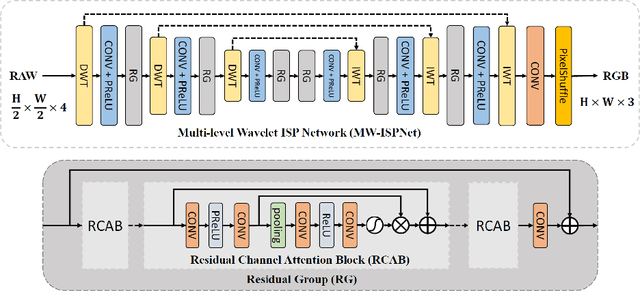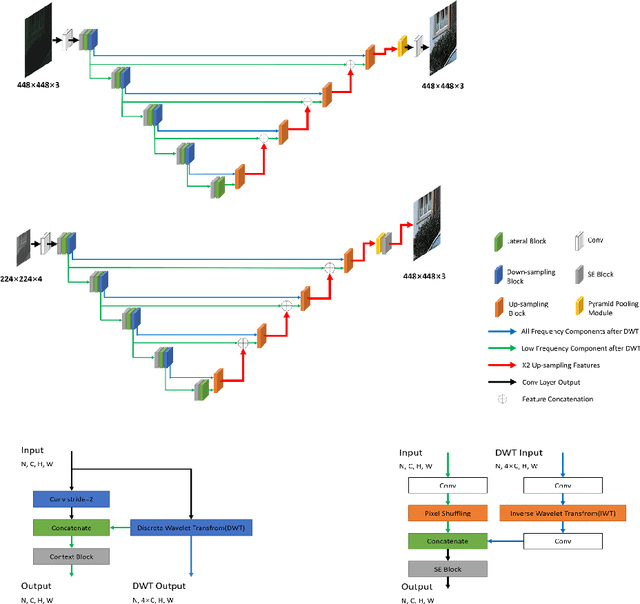Chengqi Li
Learning for Unconstrained Space-Time Video Super-Resolution
Feb 25, 2021



Abstract:Recent years have seen considerable research activities devoted to video enhancement that simultaneously increases temporal frame rate and spatial resolution. However, the existing methods either fail to explore the intrinsic relationship between temporal and spatial information or lack flexibility in the choice of final temporal/spatial resolution. In this work, we propose an unconstrained space-time video super-resolution network, which can effectively exploit space-time correlation to boost performance. Moreover, it has complete freedom in adjusting the temporal frame rate and spatial resolution through the use of the optical flow technique and a generalized pixelshuffle operation. Our extensive experiments demonstrate that the proposed method not only outperforms the state-of-the-art, but also requires far fewer parameters and less running time.
AIM 2020 Challenge on Learned Image Signal Processing Pipeline
Nov 10, 2020



Abstract:This paper reviews the second AIM learned ISP challenge and provides the description of the proposed solutions and results. The participating teams were solving a real-world RAW-to-RGB mapping problem, where to goal was to map the original low-quality RAW images captured by the Huawei P20 device to the same photos obtained with the Canon 5D DSLR camera. The considered task embraced a number of complex computer vision subtasks, such as image demosaicing, denoising, white balancing, color and contrast correction, demoireing, etc. The target metric used in this challenge combined fidelity scores (PSNR and SSIM) with solutions' perceptual results measured in a user study. The proposed solutions significantly improved the baseline results, defining the state-of-the-art for practical image signal processing pipeline modeling.
AWNet: Attentive Wavelet Network for Image ISP
Sep 13, 2020



Abstract:As the revolutionary improvement being made on the performance of smartphones over the last decade, mobile photography becomes one of the most common practices among the majority of smartphone users. However, due to the limited size of camera sensors on phone, the photographed image is still visually distinct to the one taken by the digital single-lens reflex (DSLR) camera. To narrow this performance gap, one is to redesign the camera image signal processor (ISP) to improve the image quality. Owing to the rapid rise of deep learning, recent works resort to the deep convolutional neural network (CNN) to develop a sophisticated data-driven ISP that directly maps the phone-captured image to the DSLR-captured one. In this paper, we introduce a novel network that utilizes the attention mechanism and wavelet transform, dubbed AWNet, to tackle this learnable image ISP problem. By adding the wavelet transform, our proposed method enables us to restore favorable image details from RAW information and achieve a larger receptive field while remaining high efficiency in terms of computational cost. The global context block is adopted in our method to learn the non-local color mapping for the generation of appealing RGB images. More importantly, this block alleviates the influence of image misalignment occurred on the provided dataset. Experimental results indicate the advances of our design in both qualitative and quantitative measurements. The code is available publically.
 Add to Chrome
Add to Chrome Add to Firefox
Add to Firefox Add to Edge
Add to Edge